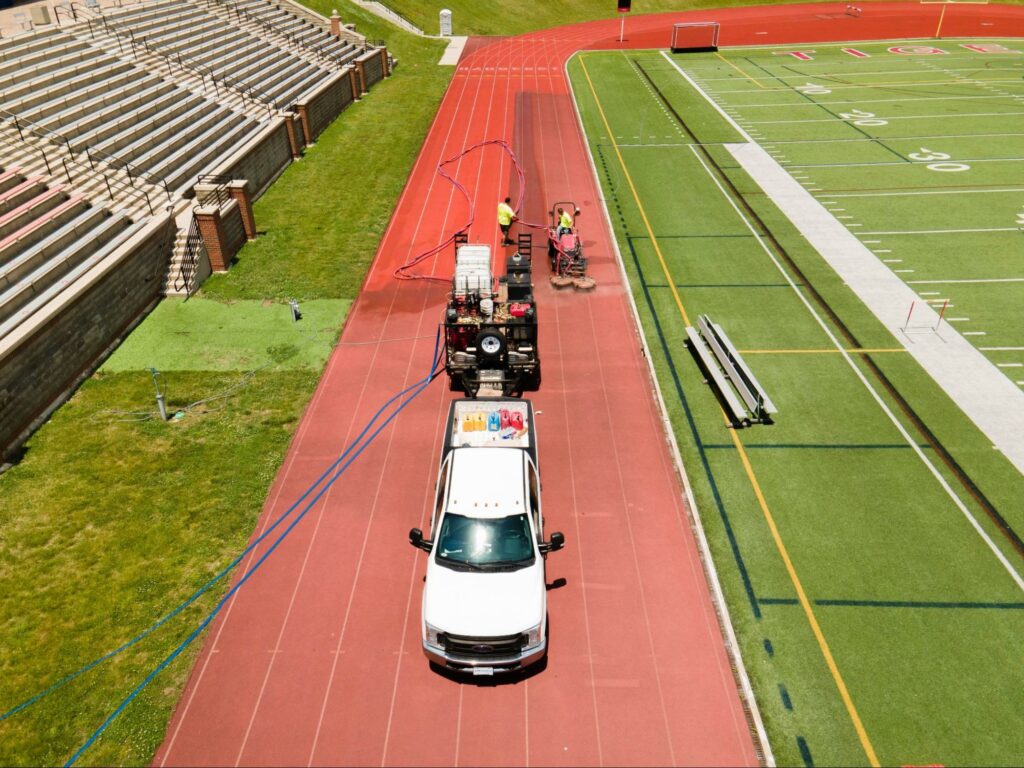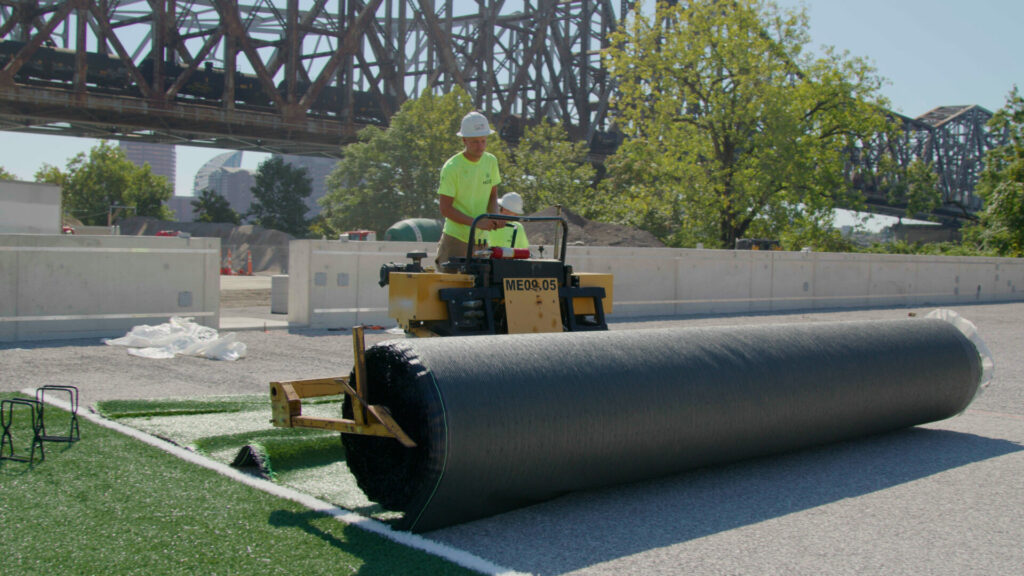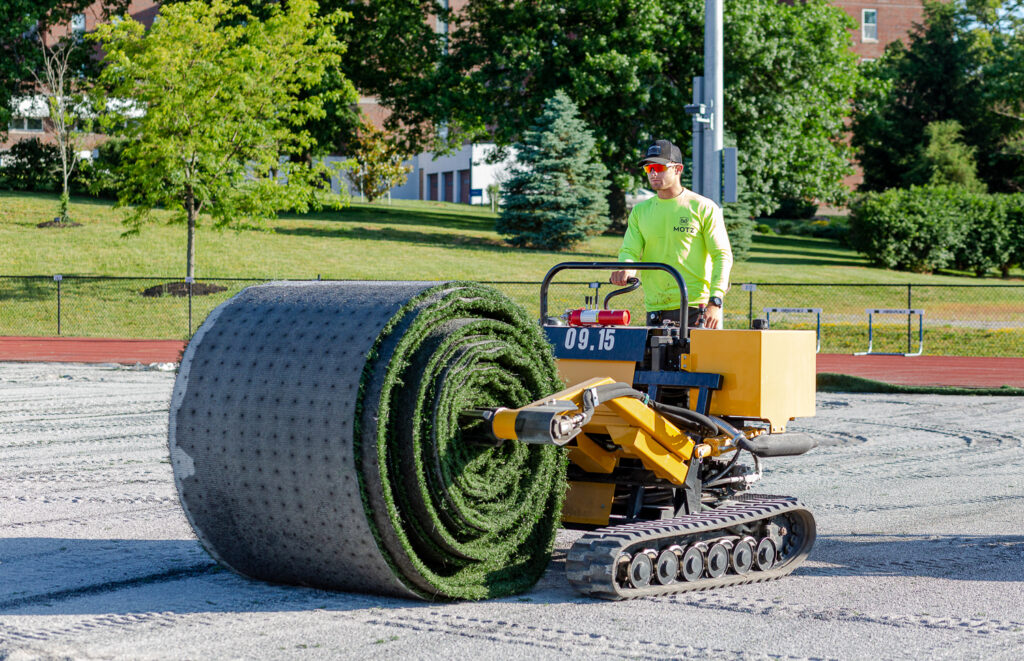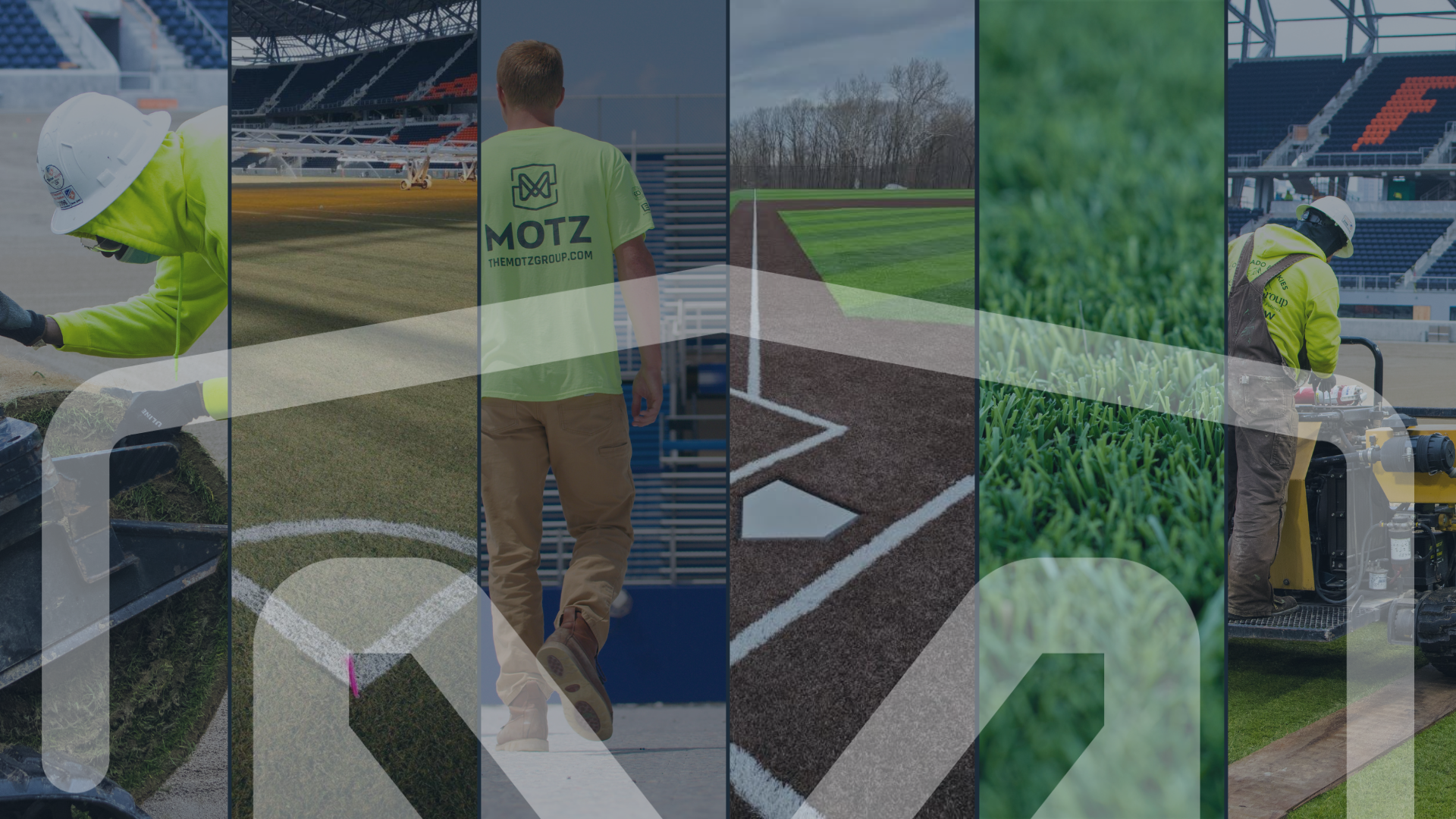
Sports Field Blog
Subscribe To Email Updates
Subscribe to our weekly newsletter and we’ll send updates straight to your inbox
How to Handle Flood Damage on an Artificial Turf Field
Changes in the weather can keep us on our toes, but Mother Nature sometimes throws us a curveball, unleashing devastation that no amount of preparation or awareness can prevent.
Like most structures, artificial turf is prone to this kind of damage, especially during hurricanes, floods, relentless rainfall, snowmelts, and more. For instance, during the summer of 2016, a severe storm dropped 4.4 inches of rain across Cincinnati’s Roger Bacon High School’s synthetic turf field in just a few hours. It caused widespread flash flooding and damage that the field couldn’t recover from, and it had to be replaced.
If you’re living in a flood-prone area, this could happen to your field without warning. But many kinds of damage to your synthetic turf facilities can be repairable.
In this article, we’ll cover:
- What happens when it rains on a turf field
- How to deal with a flooded field
- How Envirofill® can prevent damage
What Happens When Your Artificial Turf Field Floods?
Synthetic fields are designed for reliable drainage capabilities, but during floods, the surrounding storm sewers can get overwhelmed with water, causing it to back up and drench even a perfectly designed artificial turf system. Here are some of the effects:
- Debris builds up: Floodwaters can bring contaminants such as silts, mud, leaves, rubbish, and other materials onto the field, which filter down through the infill and sit within the layers of the system. This clogs up the drainage holes in the backing material of the turf and could damage the turf fibers.
- Infill is displaced: Infill, meant to stabilize synthetic turf, can float away, migrate, or scatter during floods, causing displacement. Without the protection of proper infill levels, your turf fibers become more vulnerable to faster wear overtime.
- Carpet is displaced: The sheer force of floodwaters can physically move or lift the artificial turf carpet by creating enough pressure to shift the turf. This can lead to wrinkling, buckling, or even complete removal of sections of the turf from its intended position. This is more likely to happen if the infill is not securely in place, usually while the turf is still being installed when the flood occurs. Even perfectly installed turf carpets can be shifted around if the flood is a fast-moving one.
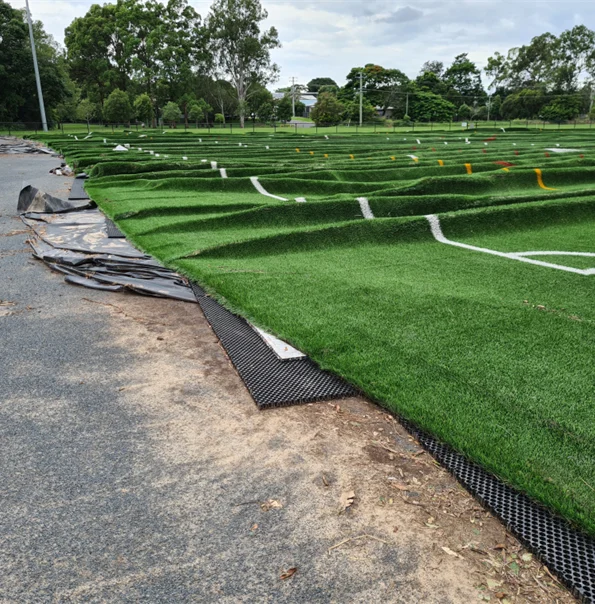
- Ground below the turf is damaged: Floodwaters can erode the turf’s supporting base of stone, gravel, or sand, causing unevenness and soft spots. In cold climates, freezing saturated ground forms ice lenses, heaving and shifting the turf and base materials.
- Structural Damage: Excessive water runoff can cause failure in the sub-base, including the layers of geotextiles or membranes used for separation and stabilization. The movement of water can shift these layers, create voids, or cause buckling, all of which undermine the field’s stability. This happens especially if the wrong materials are used or if the installation does not account for rapid water escape.
How To Deal With A Flooded Artificial Turf Field
The very first thing you should do is call up your synthetic turf provider and ask for a professional to visit as soon as possible. While a layperson can easily identify visible hazards such as debris and floating turf, only a professional will have the knowledge and tools at hand to survey the damage and provide you with a complete picture.
Motz professionals are ready to assist during these circumstances. Here are steps to take while you wait:
- Cordon off the area: Even if the field looks okay, there can be structural damage which can be exaggerated with use. Do not allow users and maintenance staff to enter the field. Disallow unauthorized access until the professional has evaluated the field and necessary repairs have been completed.
- Gather relevant material: Put together all the warranty and insurance documents related to the turf materials (the shockpad, turf fibers, infill, and more) and review their coverage. Gather blueprints or any design documents that the turf company provided during installation.
- Documentation: Document the extent of the flood impact through photographs and notes. This is crucial for insurance and warranty claims, understanding the extent of the damage, and planning repairs. Keep a detailed record of communication and actions taken from the initial assessment through to the restoration of the field.
Artificial Turf Repairs – What are the Options?
After investigating the damage to the drainage, safety of the turf system, and other aspects, Motz will advise you on the best course of remediation. We might recommend a deep clean service like Motz365 Field Aide or minor-to-major repairs, like infill top-off, damaged patches or areas, disinfectant, seam repair, and more. Motz365 Field Aide also comes with a complimentary GMAX test to understand what elements of the system were impacted. After all repair measures are explored, the last resort is replacement.
Why Flood-prone Fields Need Envirofill Turf Infill
Just about a year after it added Motz’s Envirofill to its synthetic turf fields, the University of North Carolina at Chapel Hill (UNC) was faced with Hurricane Florence, which dropped more than 37 inches of rain.
Remarkably, thanks to reliable components like Envirofill, the field stayed put. The lacrosse and soccer teams were back on the fields a mere 24 hours after the flood waters receded. Read the case study here.
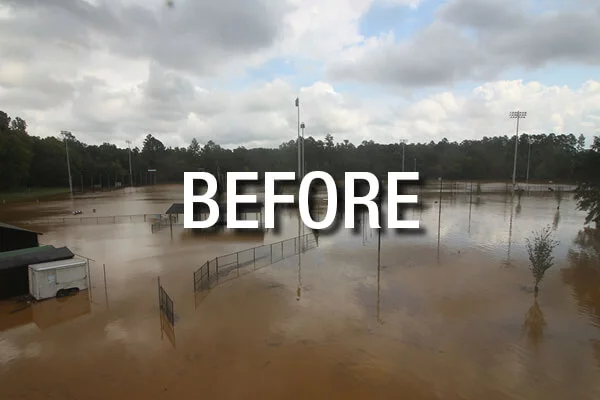
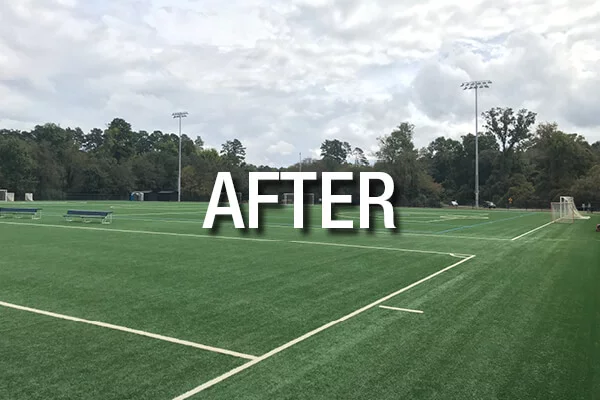
Here’s a breakdown of how Envirofill® made that possible.
- Envirofill has a specific gravity (SG) of 2.65. Specific gravity refers to the density of the turf infill material relative to water. A substance with SG over 1.0 will sink, while one lower than 1.0 will float. Thus, Envirofill does not migrate off, while other infills with an SG lower than 1.0 often get displaced.
- Envirofill’s round shape also enhances the turf and infill’s permeability, facilitating quicker movement of rainfall through and out of the field. Unlike other types of infill, Envirofill resists compaction, which helps maintain the infill’s effective porosity over time, ensuring consistent drainage for many years.
- Microban antimicrobial protects the infill against bacteria mold and mildew that can cause stains, odors, and product deterioration. The built-in antimicrobial offers peace of mind against what might be lurking in the floodwaters.
Dealing With A Flooded Field? Call A Motz Expert
Facilities faced with an unexpected disaster need an experienced professional they can count on. As disappointing, messy, and challenging handling a flooded artificial turf field can be, there are trusted experts to turn to for guidance and support. For more information on Motz’s capabilities in helping weather-related synthetic turf damage, contact us for an assessment and remediation recommendations.
Similar Blogs
